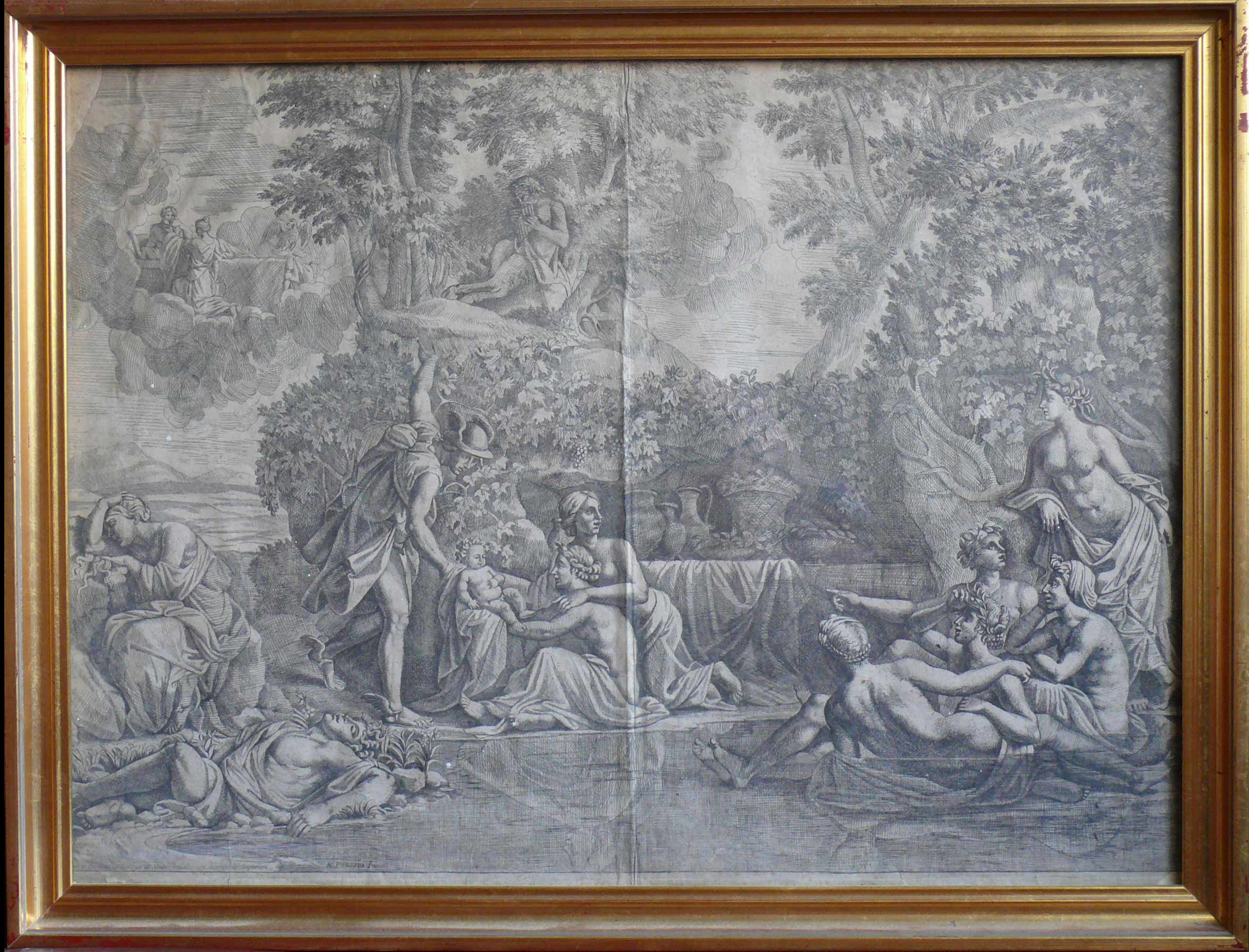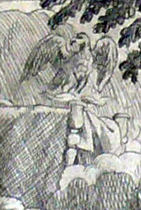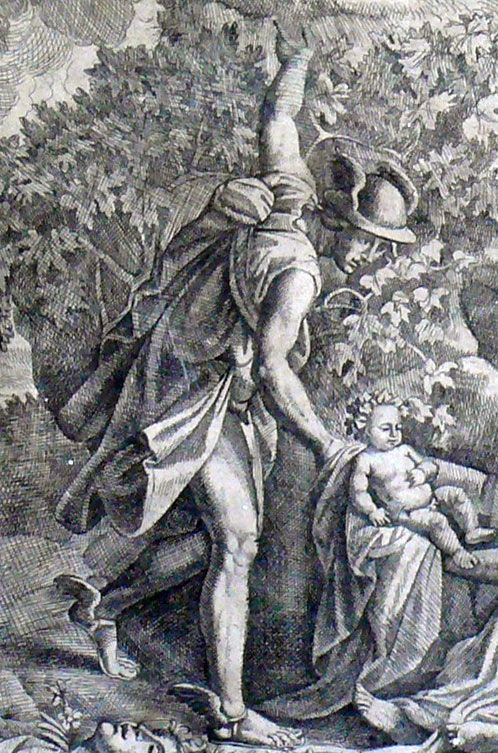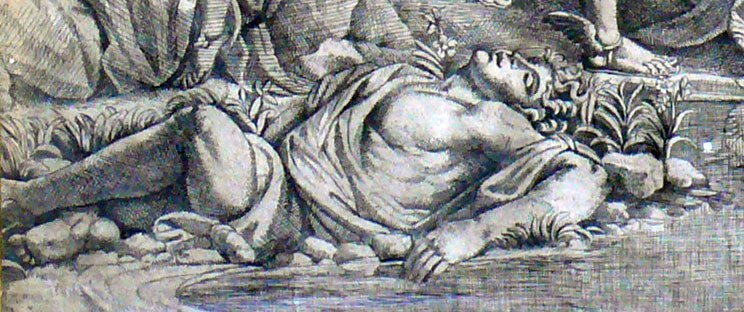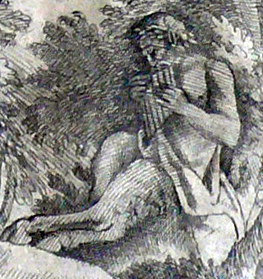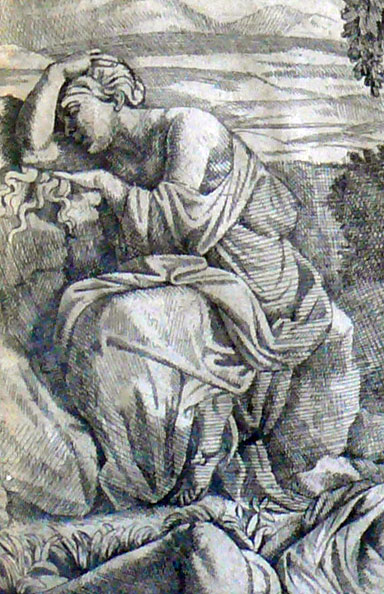The Birth of Orpheus
Nicolas Poussin inv.
__orio in Prione in Bottega di Matteo Giudice con licenza de Superiori
Rome, Middle of the 17th C.
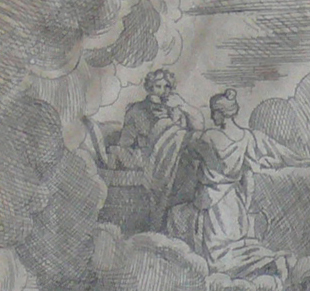
The eagle in the scene in the upper left quadrant identifies the figure seated on a throne as Almighty Jupiter (Zeus) in Olymp, as do the storm clouds encroaching upon him from above and from the left.
The figure in the central scene, bearing wings on his feet and helmet, is Mercury (Hermes), the messenger of the gods. Mercury touches with his right arm the baby while extending his left arm towards Jupiter, indicating that he is about to bring him the tydings of the new-born child.
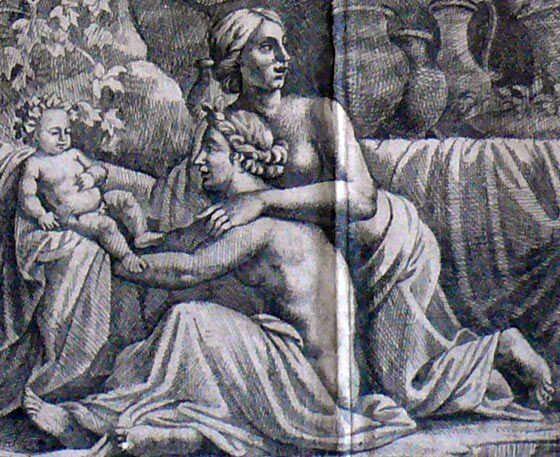
There are nine female figure: one kneeling before Jupiter, one bereaving on the left, two presenting or showing the child to Mercury, and five standing near or bathing in the pond. These are most likely the nine Muses, although no attempt has been made to clearly distinguish the identity of each one.
The pose of the reclining male figure on the lower left reminds one of the sleeping (exhausted) Mars after his visit with Venus in the painting by Botticelli, undoubtedly known to Nicolas Poussin. But the chap could also be another character, perhaps Apollo, wo never strayed too far from his beloved muses.
The hooved figure is Pan, amusing himself (and none other) with his pandemic flute, alluding to music-making, albeit of a lower form.
So, who is the new-born child?
The answer:
Calliope (Greek for "beautiful-voiced"), the muse of heroic poetry, was a daughter of Jupiter. This oldest and wisest of the nine muses gave birth to many offspring; in union with Apollo, though, she gave birth to none other than Orpheus! Apollo was very fond of Orpheus and gave him a lyre to play. Calliope then taught Orpheus the art of poetry, which he sang to the lyre. String instruments, associated with Apollo and later Orpheus, were considered from their inception to be of a higher level of sophistication that the winds, the instruments of Pan, which were held in lower esteem.
Calliope in fact lived in Pimpleia, not very far from Olympus, another detail which can be verified by our engraving.
Although originally from France, Nicolas Poussin spent the greater part of his life in Rome, where he produced paintings in a classical style, much treasured in his native country, but also by the passionate collector of art, Arcangelo Corelli, himself an "Orpheus of his time".
04.01.2010
